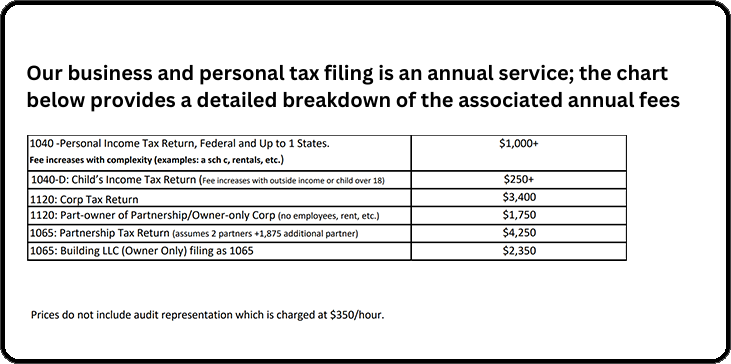Tune in to our podcast series: The Dental Board Room
Listen Now

Dentists work tirelessly to build profitable practices, but when it comes to taxes and long-term wealth, many miss one of the simplest strategies available: using your practice payroll to create tax-free retirement accounts for your kids.
Instead of handing over an allowance, what if you could legally pay your children through the practice, save thousands in taxes, and put them on a path to financial independence—before they even graduate college?
That’s where Roth IRAs for kids come in. By combining payroll wages with Roth IRA contributions, you can give your children the gift of lifelong tax-free growth. Here’s how it works and why every dentist should consider it.
Most people think of Roth IRAs as retirement accounts for adults, but they’re actually one of the most powerful tools you can give your kids—if they have earned income.
Key benefits:
When paired with the “kids on payroll” strategy, Roth IRAs become even more powerful.
The IRS only allows Roth IRA contributions if the child has earned income. That means mowing lawns, babysitting, or, in the case of dentists—working in your practice.
When you put your kids on payroll and pay them W-2 wages:
In 2025, the maximum Roth IRA contribution is $7,000 per year for anyone under age 50—including your kids.
Your children need to be paid as W-2 employees, not contractors. This means:
You can pay each child up to $15,750 in 2025 without triggering federal income tax, thanks to the standard deduction. From there, you can allocate up to $7,000 of their wages into a Roth IRA.
Since minors can’t open accounts on their own, you’ll set up what’s called a custodial Roth IRA.
Most major brokerages like Vanguard, Fidelity, and Charles Schwab make it easy to open a custodial Roth IRA.
Now comes the magic. Out of your child’s W-2 income, contribute up to $7,000 annually to their Roth IRA.
You don’t need to overcomplicate it. A simple annual transfer from your family checking account into the Roth IRA (before April 15 of the following year) is all it takes.
This contribution can come from the wages they earned—even if you’re the one actually moving the money.
Here’s where this strategy shines: the power of compounding over decades.
Let’s run some numbers:
Now, here’s the kicker:
If your child leaves the Roth IRA untouched until retirement, that $384,000 could grow to over $3 million by age 65—completely tax-free.
That’s more than many practicing dentists have at retirement, all because you took advantage of an IRS-approved strategy early.
What should go inside your child’s Roth IRA? Since this money is meant for the very long term, growth-oriented investments make the most sense.
Because Roth IRAs are tax-free, you don’t need to worry about dividends or capital gains taxes—making them the perfect home for aggressive, high-growth assets.
As your child gets closer to using the money (for school, a first home, or retirement), you can gradually shift toward more conservative investments.
Some dentists ask: Why not just use a 529 plan for education savings?
Both accounts have advantages, but Roth IRAs often come out ahead:
Many dentists choose to prioritize Roth IRAs first, since they provide tax-free retirement growth in addition to the option of education funding.
One of the hidden benefits of this strategy is financial education. When kids see a paycheck with their name on it, they start to connect work with earnings.
You can use this opportunity to:
Instead of simply handing them an allowance, you’re giving them a real paycheck, a retirement account, and a foundation of financial literacy.
Let’s imagine a dentist with three children, ages 8, 12, and 15.
At the end of the year, the family has:
All while teaching the kids valuable lessons about work, savings, and responsibility.
As a dentist, you’re already working long hours to build financial security. This strategy doesn’t add more stress or complexity—it simply reroutes money you’re already earning in a way that saves taxes and builds family wealth.
Here’s the formula:
It’s not a loophole—it’s smart planning. And it could be one of the most impactful financial decisions you make for your family’s future.
Turning allowance into wealth is more than just a catchy phrase. For dentists, it’s a real, practical strategy to reduce taxes, fund your kids’ future, and build generational wealth.
Instead of giving your kids $20 a week for chores, imagine giving them a retirement account that could one day be worth millions—all while saving you thousands on taxes every year.
Want to learn exactly how to set this up and avoid IRS pitfalls?
Wes knows what's best for dental practices. He's been doing this for a long time and he sees lots of practices. He can tell me how our practice is doing, and what we can do to increase our productivity. With past CPA's, there were no ideas. It was all coming from me, saying "I think I can do better, but I don't know how." I come in to meet with Wes and he says "You CAN do better, and I know how."
PracticeCFO is in hundreds of dental offices around the country. They know what numbers should look like. They know what percentages of payroll, rent and supplies should be, and they will hold you accountable to those numbers, which will really help you stick to your plan and your path of growth and savings. That is invaluable
Whenever something comes up, whether it's building or practice related and we weren't sure where the numbers would go, PracticeCFO has been instrumental in helping us figure that out. I can't say enough of how important that is - that it goes beyond that initial partnership. They make sure this business marriage works.
When I go home from work, I don't spend a whole lot of time stressing about what my books look like, or how much I owe in taxes. By using PracticeCFO, the burden of keeping track of a lot of the big financial numbers and metrics are taken off my plate.
PracticeCFO helped me develop a plan for the future. I have colleagues that work with other accountants that don't have a plan - they just look at the numbers of the practice and that's it. There's no plan for 10, 20 years from now. But with PracticeCFO, you get that. PracticeCFO makes you feel like you're they're only client.
(In reference to his practice sale) What could've been super stressful, wasn't! When picking John and Wes, it was from word of mouth recommendations and other people's experiences from the past that really did it for me. And it turns out that those recommendations were right on the line.
Wes knows the business side of dentistry. His comprehensive plan will organize your personal and professional finances so you can focus on taking care of patients. Massive ROI.
I can’t say enough good things about everyone at PracticeCFO. Everyone on the team is professional, organized, knowledgeable, helpful and kind. They also respond to emails and phone calls immediately and are always happy to help. They have helped me navigate year-to-year as a business owner. PracticeCFO gives me peace of mind that my business is in good hands.
I love Practice CFO! They have helped me obtain a practice and maintain a practice. They are incredible people who are on top of everything and make owning and running the business portion of a practice easy. They couldn’t be better for my business and my sanity. They have every detail of the business and taxes taken care of where all I have to do is show up and follow their easy steps to success!
Practice CFO has the best tools I’ve seen for personal tax and financial planning in addition to top-tier corporate tax and accounting services. I have been very pleased with the level of quality service. They manage my monthly bookkeeping and accounts payable. It is a great system and saves me a ton of time, and it allows us to have monthly financial statements within a week of month end.

This will close in 0 seconds